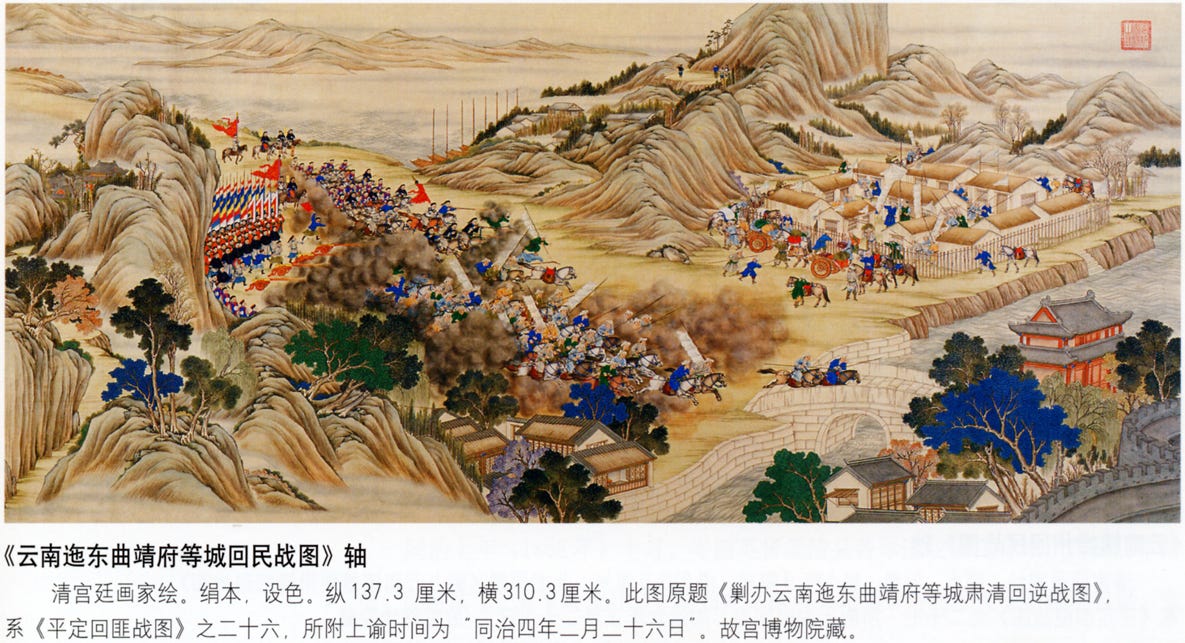Listen to Kaiser’s narration in the embedded audio player above!
Yunnan, a province on China’s southwestern border, acquired a reputation in the late 20th century as a paradise of sorts. Western backpackers were one population that found the province’s mild climate, natural beauty, and unhurried lifestyle combined to their liking. If the place could be reduced to one word, it might be “peaceful.”
Such was not the case in 1856.
For three days, from May 19-21, hundreds of local thugs flowed through Kunming with impunity and with tacit — perhaps active — consent from the local government. By the end of the three days, at least 4,000 and perhaps more than 8,000 people were dead, almost all of them Hui, or Chinese Muslims.
Even within the striking cultural and geographical diversity of China, Yunnan stands out. As historian David Atwill has described, “numerous mountain ranges ripple across the province, often juxtaposing temperate valleys with towering alpine peaks.” The rugged terrain was often at the very limit of the imperial state, its “diversified topography and unique geographical position at the confluence of Tibetan, Chinese, and Southeast Asian cultures forged an ethnically disparate population singular in all of China.” While today 26 of China’s official 56 state-recognized ethnic groups are present in Yunnan, Atwill notes that in the 19th century, Qing officials described at least 140 different groups as calling Yunnan home, “demonstrating not only the province’s diversity but also the Qing state’s cognizance of its multiethnic subjects.”
With all this as context, it may not be surprising that what we might today describe as ethnic tensions were not unknown to Yunnan. In the mid-19th century, the region was difficult to govern and prone to local violence, a situation that intensified as the Qing government weakened amid foreign and domestic pressures. The focus of the tension was conflict among Han Chinese, Hui, or Chinese Muslims, and the state. Violence — often on a terrible scale — was not uncommon: in 1839, Han militia massacred some 1700 Muslims in the town of Mianning, near the border with Myanmar. The city of Baoshan was “cleansed” by local officials, supported by Han militia, in 1845. Eight thousand Muslims died.
Keep reading with a 7-day free trial
Subscribe to Sinica to keep reading this post and get 7 days of free access to the full post archives.




